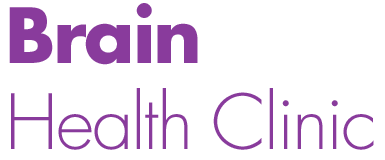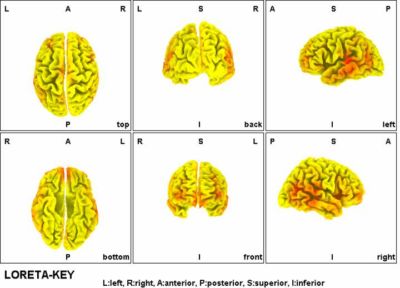 [EEG Electrode Placement] Any successful clinician in this field must stay abreast and trained on the latest and best technological advances. Neurotherapy includes non-neurofeedback stimulation and application, like pulsed Electromagnetic Frequency (pEMF), Quantitative EEG, neuromodulation, Low Resolution Brain Electromagnetic Topography (LORETA), as well as the skillful incorporation of biofeedback technology, like hemoencephalography (HEG), Galvanic Skin Response (GSR) and Heart Rate Variability, to name a few.
[EEG Electrode Placement] Any successful clinician in this field must stay abreast and trained on the latest and best technological advances. Neurotherapy includes non-neurofeedback stimulation and application, like pulsed Electromagnetic Frequency (pEMF), Quantitative EEG, neuromodulation, Low Resolution Brain Electromagnetic Topography (LORETA), as well as the skillful incorporation of biofeedback technology, like hemoencephalography (HEG), Galvanic Skin Response (GSR) and Heart Rate Variability, to name a few.
In training, we are disrupting the pathological amplitude, patterns and connectivity of the brain and retraining it by using a linear EMF stim only protocol to show the brain what we want it to do, followed up with a operant conditioning session where we ask the brain to carry out the new instructions on its own. This training leads to dendritic growth and neurogenesis, by its nature.
Brain Training
Z-Score Training
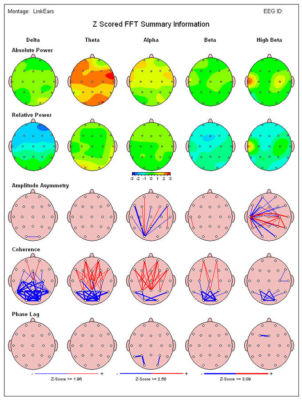 Z-score training involves identifying the aberrant brainwave amounts, patterns and relationships and comparing them to a normal sample of similar age and sex as the client. Using standard deviations from the norm we can see how deviant the brain is behaving. Using both the presenting problems, as well as the client’s presentation, as well as skill sets as a gauge, we develop a unique, data-driven protocol (a converse blueprint—molded to fit the client’s brain) to train that individual towards health.
Z-score training involves identifying the aberrant brainwave amounts, patterns and relationships and comparing them to a normal sample of similar age and sex as the client. Using standard deviations from the norm we can see how deviant the brain is behaving. Using both the presenting problems, as well as the client’s presentation, as well as skill sets as a gauge, we develop a unique, data-driven protocol (a converse blueprint—molded to fit the client’s brain) to train that individual towards health.
Heart Rate Variability
The analysis of heart rate variability (HRV), or heart rhythms, is a noninvasive means of measuring heart–brain and autonomic nervous system dynamics as influenced by one’s emotional state. Clinical research indicates HRV as a primary indicator of neurocardiac fitness and overall health. Abnormally low HRV is a predictor of premature mortality and is associated with a wide range of health problems, many of which can be stress-related. By influencing shifts in heart rhythms, one can positively lower stress levels, and thereby influence neural, hormonal and biochemical responses, yielding improvements in blood pressure, immune system function and so on. Effects may be both immediate and long-lasting.1
Neuroguide
The NeuroGuide Analysis system is to be used for the statistical evaluation of the human electroencephalogram (EEG). Neuroguide is a multi-faceted quantitative EEG and neurofeedback system that interfaces with other software modalities, making for a robust training platform.
http://www.appliedneuroscience.com/
Neurofield x3000
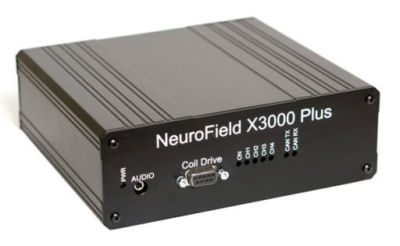 The NeuroField X3000 is a four-channel frequency generator that can generate pEMF (pulsed electromagnetic field) frequencies from 0.31-300,000 Hz. The pEMF output intensity ranges from 1-40 microtesla. The X3000 works seamlessly with the Q20 and HRV and is used to run the RTZ (real time z-score) procedure. The X3000 connects to four 200 wind coils that can be placed anywhere on the body.
The NeuroField X3000 is a four-channel frequency generator that can generate pEMF (pulsed electromagnetic field) frequencies from 0.31-300,000 Hz. The pEMF output intensity ranges from 1-40 microtesla. The X3000 works seamlessly with the Q20 and HRV and is used to run the RTZ (real time z-score) procedure. The X3000 connects to four 200 wind coils that can be placed anywhere on the body.
Neurofield Q20
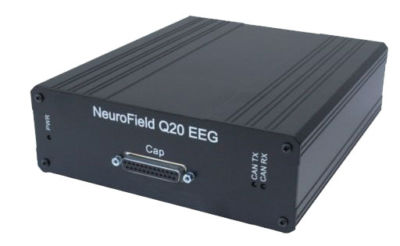 The NeuroField Q20 EEG amplifier reflects the state of the art in EEG signal processing. The NeuroField Q20 is a DC coupled, 19 channel EEG amplifier. The Q20 is a sharp, clean EEG that has can used with the X3000 device to measure EEG in between pEMF (pulsed electromagnetic field) stimulation utilizing the real time z-score procedure in the NeuroField software platform. The Q20 has also been integrated in the Neuroguide 19 channel LORETA and Surface neurofeedback z-score platform. Also, the Q20 has been integrated into the Bioexplorer software platform and can be used for standard neurofeedback procedures. In this way the Q20 is truly a versatile EEG amplifier that combines pEMF and z-score neurofeedback technologies.
The NeuroField Q20 EEG amplifier reflects the state of the art in EEG signal processing. The NeuroField Q20 is a DC coupled, 19 channel EEG amplifier. The Q20 is a sharp, clean EEG that has can used with the X3000 device to measure EEG in between pEMF (pulsed electromagnetic field) stimulation utilizing the real time z-score procedure in the NeuroField software platform. The Q20 has also been integrated in the Neuroguide 19 channel LORETA and Surface neurofeedback z-score platform. Also, the Q20 has been integrated into the Bioexplorer software platform and can be used for standard neurofeedback procedures. In this way the Q20 is truly a versatile EEG amplifier that combines pEMF and z-score neurofeedback technologies.
